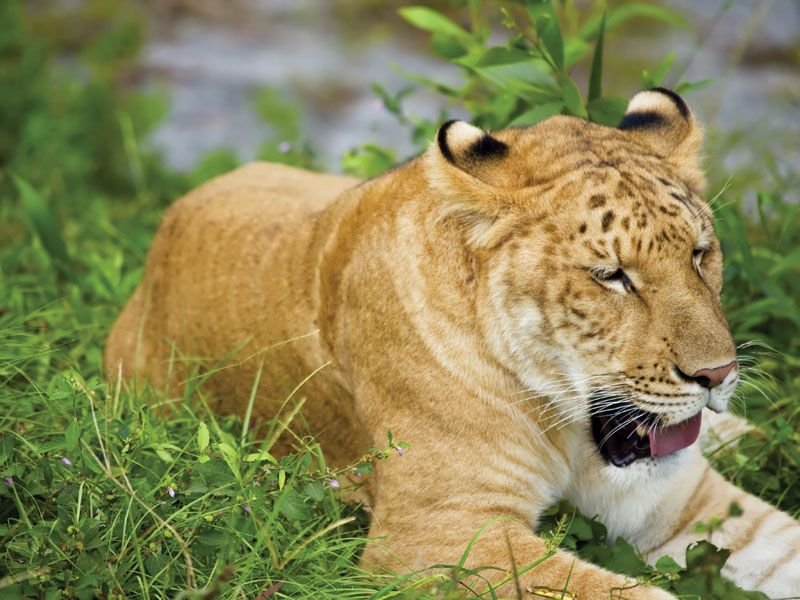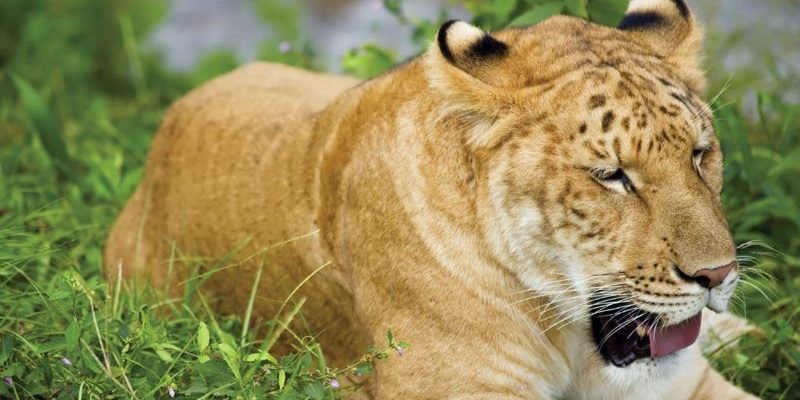
So, you might wonder, “Is the liger endangered?” To answer that, we need to dive into the world of ligers and their unique position within wildlife conservation. The truth is, ligers raise important questions about biodiversity and the ethical considerations of creating hybrids. Let’s take a closer look at the details surrounding this intriguing creature and what it means for global conservation.
What Exactly is a Liger?
A liger, the largest of the big cats, is a hybrid offspring of a male lion and a female tiger. They can weigh between 300 to 500 pounds, making them considerably larger than either parent species. To visualize it, think of a lion’s mane combined with the striking stripes of a tiger. They often exhibit traits from both parents, such as the liger’s massive size and playful demeanor. While they do share similarities with both lions and tigers, ligers can’t reproduce, which sets them apart from natural species.
Their existence is primarily due to human intervention. These hybrids often result from breeding programs in zoos or wildlife parks, where conservation efforts sometimes take a backseat to the spectacle of showcasing unique animal combinations. You might be wondering how this affects their overall health. In many cases, ligers face health issues, such as organ problems and genetic disorders, stemming from the mixing of two distinct species. It’s a prime example of how not all hybrids thrive in captivity.
The Conservation Status of Ligers
So, are ligers endangered? The short answer is no, but it’s not that simple. Unlike tigers and lions, which are listed as endangered due to habitat loss and poaching, ligers themselves do not have a conservation status. That’s because they’re not a naturally occurring species. Instead, they exist in environments where humans have chosen to create them. This raises the question: should we focus on preserving the wild populations of tigers and lions rather than ligers?
While ligers may not be at risk of extinction, their existence can sometimes divert attention and resources away from the conservation of their parent species. Many conservationists argue that we should prioritize efforts to protect the natural habitats and populations of both lions and tigers. After all, these big cats play vital roles in their ecosystems. Ignoring the uniqueness of their natural counterparts could threaten the overall biodiversity we desperately need to sustain.
The Ethics of Hybridization
Another layer to this conversation is the ethical consideration surrounding hybridization. Let’s face it: creating ligers for the sake of curiosity or entertainment often raises moral questions. Should we breed these hybrids if they don’t have a place in the wild? Well, here’s the thing—hybridization can lead to compromised health. Many ligers suffer from health issues due to their massive size, and this raises questions about the responsibility of zoos and breeding facilities.
Honestly, many conservationists feel that resources would be better spent on preserving wild habitats and ensuring the survival of species that are under threat. Rather than trying to create something new, wouldn’t it make more sense to protect and nurture the existing biodiversity? This conversation encourages us to think critically about our role in conservation and the impact of our choices on animal welfare.
The Role of Zoos and Conservation Programs
Zoos have a unique role to play in conservation, often serving as sanctuaries for endangered species. Many facilities focus on breeding programs for lions and tigers to help bolster their populations. However, the emergence of ligers can shift the focus away from these critical efforts. Do zoos use ligers as a marketing tool? It seems that way at times. The publicity surrounding unique animals often pulls in crowds, which can cloud the essential mission of conservation.
Many reputable zoos and wildlife parks are now working more closely with conservation programs, emphasizing the importance of preserving natural habitats rather than creating hybrids. They promote education about the threats facing lions and tigers in the wild, aiming to raise awareness and support for ongoing conservation efforts. As visitors, it’s crucial to understand where our support should be directed.
Conservation Efforts for Parent Species
When we discuss ligers, it’s imperative not to lose sight of the conservation efforts for their parent species—lions and tigers. Both of these magnificent animals are facing serious threats in the wild. For instance, tiger populations have dwindled to around 3,900 individuals worldwide, primarily due to poaching and habitat loss. Meanwhile, lions face their challenges, with their populations declining to an estimated 20,000 to 25,000.
Leading conservation organizations are working tirelessly to protect the habitats of these big cats, from anti-poaching initiatives to community outreach programs. These efforts are vital not only for the cats themselves but also for the ecosystems they inhabit. Protecting lions and tigers helps maintain the balance of their habitats, benefiting countless other species.
How You Can Get Involved
You might be thinking, “What can I do to help?” There are numerous ways to contribute to the conservation of lions and tigers. Here are some meaningful actions you can take:
- Support conservation organizations: Donating to reputable wildlife charities helps fund vital programs that protect big cats in the wild.
- Educate yourself and others: Share information about the importance of conserving natural species and their habitats.
- Visit ethical zoos: Choose to support zoos and aquariums that prioritize education and conservation over spectacle.
- Advocate for wildlife protection: Engage in local or global campaigns that aim to influence policies protecting big cats and their ecosystems.
Your actions, no matter how small, can contribute to the larger conservation movement. Every bit helps, and raising awareness about the plight of wildlife can inspire others to join the cause.
A Final Reflection on Ligers and Conservation
In conclusion, while ligers themselves aren’t endangered, their existence brings forth important discussions. Their hybrid nature reminds us of our responsibility to the natural world. As fascinating as these creatures may be, we must keep our focus on preserving the wild populations of lions and tigers, whose futures hang in the balance.
Conservation efforts require our support and attention, so let’s prioritize protecting the natural habitats and species that are truly at risk. After all, each of us has a role to play in preserving the biodiversity that sustains our planet. When we support the conservation of natural species, we not only protect their existence but also ensure that future generations can appreciate the beauty of wildlife in its most authentic form.

